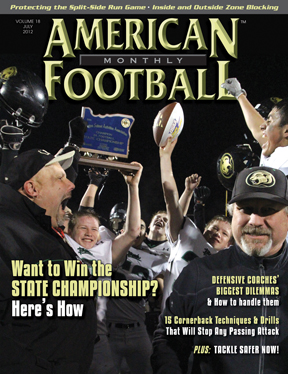Article CategoriesAFM Magazine
|
Speed Report – Useful or Useless Speed and Movement Applicationsby: Dale BaskettFootball Speed Specialist © More from this issue To bridge the gap between knowledge and application begins with having knowledge on the subject. Many football coaches have a limited knowledge of football speed. That’s not a positive for the athletes they train. However, that can be changed. I’m not trying to be negative or flippant, but I’m offering a challenge. A challenge to spend more time looking outside the box with the methods you’re providing. They may look fine to the untrained eye, but are they really sound for addressing what players need to play fast? To begin with, you must acknowledge that football speed is reliant upon knowledge and execution application of variable fast movement changes. More specifically, this is biomechanical and physiological knowledge being applied through a sound application system by design. Factual information for determining ....The full article can only be seen by subscribers.
|
|
|||||||
| HOME |
MAGAZINE |
SUBSCRIBE | ONLINE COLUMNISTS | COACHING VIDEOS |
Copyright 2025, AmericanFootballMonthly.com
All Rights Reserved





